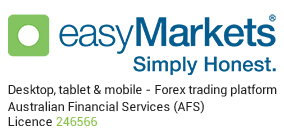 The Australian dollar has had a resilient year climbing 5% against its US counterpart through September. But the underlying trend in the so-called Aussie currency has been anything but positive. The AUD/USD exchange rate has declined around 18% over the past two years. Over the previous five years the pair has declined nearly 26%. By mid-September, the AUD/USD was trading in the mid-0.7500 range having established a yearly high of 0.7802 and a low of around 0.6861.
The Australian dollar has had a resilient year climbing 5% against its US counterpart through September. But the underlying trend in the so-called Aussie currency has been anything but positive. The AUD/USD exchange rate has declined around 18% over the past two years. Over the previous five years the pair has declined nearly 26%. By mid-September, the AUD/USD was trading in the mid-0.7500 range having established a yearly high of 0.7802 and a low of around 0.6861.
A stronger Australian dollar has put local exporters on high alert. In a country still recovering from the remnants of the mining boom, a strong local currency isn’t as attractive as it sounds. For traders however, the Australian dollar has been a source of risk and opportunity. This risk/reward ratio could change in the fourth quarter as the US Federal Reserve eyes its first interest rate increase since last December.
Monetary Policy
Most traders expect the Fed to raise interest rates once before the end of the year according to the Fed Fund futures prices. As it currently stands, traders are pricing in a slightly better than one-in-two chance the US central bank hikes rates before the end of the year.
Fed Bank of Boston President and Federal Open Market Committee (FOMC) voting member Eric Rosengren, recently argued in favour of raising interest rates gradually.
“My personal view based on data that we have received to date, is that a reasonable case can be made for continuing to pursue a gradual normalization of monetary policy,” Rosengren said in a prepared speech to the South Shore Chamber of Commerce in Massachusetts on September 9.[1]
“If we want to ensure that we remain at full employment, gradual tightening is likely to be appropriate,” he added.[2]
In Australia, the Reserve Bank has already eased monetary policy twice this year bringing the overnight cash rate to a record-low of 1.5%. The moves were a preemptive strike against deflation which is beginning to tighten the noose on the world’s 12th largest economy.
The Fed and RBA are on clearly diverging paths. This will have a noticeable effect on the AUD/USD exchange rate. While analysts are not expecting another rate cut by the RBA, a US rate increase is clearly in play. Therefore traders may expect more policy speculation in the final three months of the year.
Economics
For the most part, Australia’s economy has proved resilient in 2016 and is outpacing most of its advanced industrialized peers. Gross domestic product accelerated 1.1% in the first quarter, the fastest clip in three years. Growth slowed to a healthy 0.5% in the April-June period which translated into an annualized 3.3% gain.[3] The Reserve Bank of Australia expects the economy to grow between 2.5% and 3.5% in 2016 and 2017. Growth is expected to increase to between 3% and 4% in 2018.[4]
On the other hand, the US growth engine weakened through the first six months of the year. However, economists widely expect US GDP growth to accelerate in the second half of the year thanks to robust consumer spending and an improving housing sector. Stronger GDP growth will likely raise bets the Federal Reserve is ready to resume hiking interest rates.
The Federal Reserve downgraded its outlook on economic growth at its June policy meeting. The US economy is forecast to grow 2% in 2016 before picking up slightly to 2.1% next year.[5]
Aussie traders should therefore continue to monitor Australian and US economic data in the final quarter. Reports on employment, retail trade, consumption, inflation and housing will provide strong trading catalysts.
Other Factors
Global developments will also influence the direction of the AUD/USD in the final quarter. China, Australia’s largest trading partner, is undergoing a major transition that is impacting everything from commodity prices to equities. Meanwhile the Bank of Japan is eyeing another massive stimulus program, while the Bank of England is navigating a post-Brexit environment.
All of these forces will keep demand for safe haven assets higher. While the Japanese yen and precious metals have been the biggest benefactors of so-called risk-off trading, the US dollar could also become more attractive should the global economy weaken down the stretch.
[1] Greg Robb (September 9, 2016). “Fed’s Rosengren backs interest-rate hike amid concerns on asset prices.” MarketWatch.
[2] Reuters (September 9, 2016). “Increasingly risky to delay US rate hike, Fed’s Rosengren says.” CNBC.
[3] Daniel Palmer (September 7, 2016). “Australia’s GDP increased 0.5pc in June quarter, up 3.3pc from year earlier.” The Australian.
[4] Reserve Bank of Australia. Statement on Monetary Policy – August 2016.
[5] Federal Reserve (June 15, 2016). Projection Materials.


